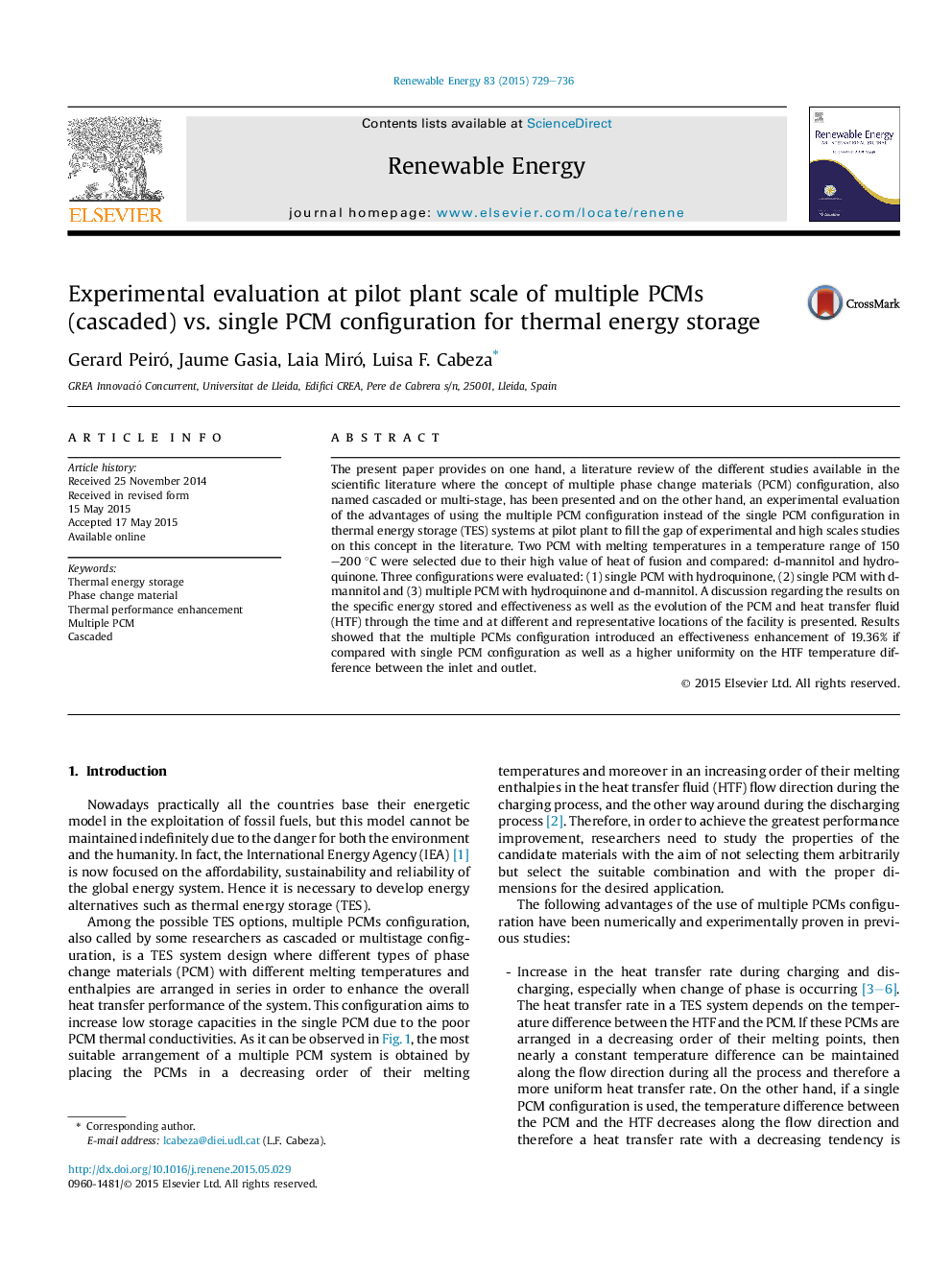| Article ID | Journal | Published Year | Pages | File Type |
|---|---|---|---|---|
| 6767219 | Renewable Energy | 2015 | 8 Pages |
Abstract
The present paper provides on one hand, a literature review of the different studies available in the scientific literature where the concept of multiple phase change materials (PCM) configuration, also named cascaded or multi-stage, has been presented and on the other hand, an experimental evaluation of the advantages of using the multiple PCM configuration instead of the single PCM configuration in thermal energy storage (TES) systems at pilot plant to fill the gap of experimental and high scales studies on this concept in the literature. Two PCM with melting temperatures in a temperature range of 150-200 °C were selected due to their high value of heat of fusion and compared: d-mannitol and hydroquinone. Three configurations were evaluated: (1) single PCM with hydroquinone, (2) single PCM with d-mannitol and (3) multiple PCM with hydroquinone and d-mannitol. A discussion regarding the results on the specific energy stored and effectiveness as well as the evolution of the PCM and heat transfer fluid (HTF) through the time and at different and representative locations of the facility is presented. Results showed that the multiple PCMs configuration introduced an effectiveness enhancement of 19.36% if compared with single PCM configuration as well as a higher uniformity on the HTF temperature difference between the inlet and outlet.
Keywords
Related Topics
Physical Sciences and Engineering
Energy
Renewable Energy, Sustainability and the Environment
Authors
Gerard Peiró, Jaume Gasia, Laia Miró, Luisa F. Cabeza,
